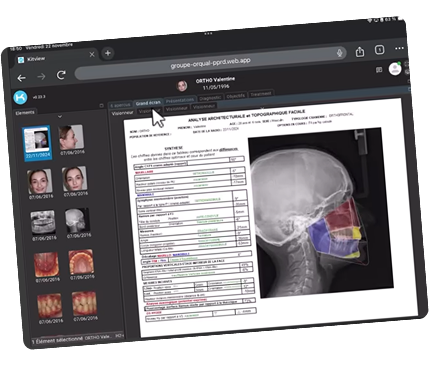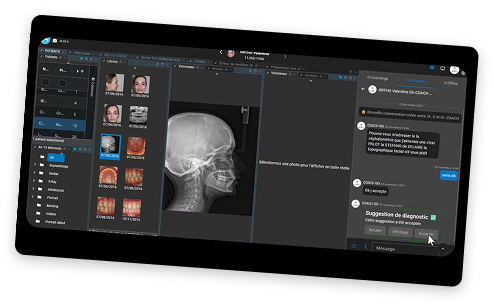Solution
Smile Monitoring’s mission is to create the world’s first orthodontic mentoring community, a space for exchanges between experienced practitioners and orthodontists wishing to progress, improve and gain confidence in their clinical decisions online.
Our vision
Doubt doesn’t end after school.
Even experienced orthodontists face complex or unexpected cases.
SmileMonitoring was created to offer support in those moments.
It’s a global network where peers and mentors share experience and guidance. Wherever you are, you can find advice, confidence, and collaboration.
Because even experts deserve support.


Beyond clinical exchange, SmileMonitoring promotes a true spirit of collaboration — a united profession where everyone’s experience benefits others.
In a fast-evolving field, orthodontists need a community to share insights, refine diagnoses, and improve care quality. SmileMonitoring is that trusted space: smart, ethical, and supportive — where every question finds an expert answer, and every practitioner grows together.
The concept
The Coach, from anywhere in the world, uses the online Smilemonitoring platform to analyze the iconographic file and provide guidance in a confidential, educational, and supportive environment.
Each Coach has the ability to define the type of iconographic file they wish to receive, depending on the nature of the case and the analysis requirements.
This may include, for example:
X-rays (profile, panoramic,
cephalometric), etc.
Intraoral photographs (right, left, occlusal, mandibular, maxillary), etc.
Clinical photos of the face and profile,
etc.
Or any other clinical material deemed necessary by the Coach to establish a complete and accurate diagnosis.
This way, the guided Practitioner knows exactly which elements to provide so that their Coach can perform a complete, documented, and thorough analysis tailored to each clinical situation. The exchanges take place in a confidential, educational, and supportive environment, fostering the Practitioner’s development and enhancing the Coach’s expertise.
Smile Monitoring Support Plans
SmileMonitoring offers several levels of support to meet all clinical
needs — from one-time case reviews to ongoing supervision.
1. “Case-by-Case” Support
The supported Practitioner can submit a specific case or a particular stage of treatment to receive targeted feedback from a Coach.
The Coach provides clear, detailed, and well-reasoned feedback on the clinical situation and the possible therapeutic options.
This option is ideal for:
 doubts regarding a diagnosis or treatment plan,
doubts regarding a diagnosis or treatment plan, atypical or VIP cases,
atypical or VIP cases, situations requiring a quick external opinion.
situations requiring a quick external opinion.
2. “Full Treatment” Follow-Up
In this plan, the Coach supports the Practitioner from the initial diagnosis through to the completion of the treatment.
Depending on the complexity of the case, the Coach may propose a structured clinical coaching program including several exchange and assessment sessions.
The follow-up includes :
 analysis of the complete initial case file,
analysis of the complete initial case file, validation of the treatment plan,
validation of the treatment plan, regular progress reviews,
regular progress reviews, and a final debrief on the results achieved.
and a final debrief on the results achieved.
3. “Thematic” Coaching
The Coach provides a personalized training plan focused on the practitioner’s objectives — whether it’s improving diagnosis, treatment planning, patient communication, or mastering a specific clinical technique.
This program is designed for practitioners who wish to strengthen their skills in a specific area, such as:
The follow-up includes :
 aligners,
aligners, orthognathic surgery,
orthognathic surgery, management of skeletal cases,
management of skeletal cases, temporary anchorage devices (TADs),
temporary anchorage devices (TADs), smile aesthetics and more...
smile aesthetics and more...
4. “Academic” Supervision
SmileMonitoring also offers the possibility of setting up collective mentoring programs designed for universities, training centers, or groups of practitioners.
These programs allow multiple cases to be followed simultaneously under the supervision of one or more lead Coaches, fostering a collaborative learning environment.
Each mentoring program is built on three core principles: trust, pedagogy, and confidentiality.
The goal is not only to guide the practitioner but to help them achieve lasting progress in their clinical practice by strengthening both their clinical rigor and their confidence in therapeutic decision-making.
